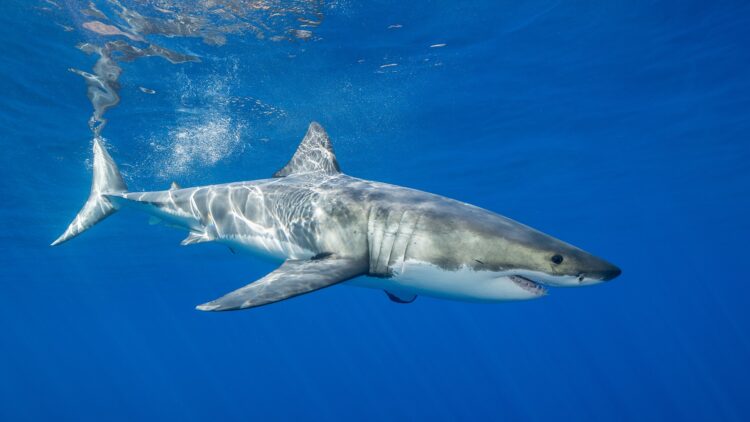A massive great white shark has been tracked swimming alarmingly close to North Carolina’s most popular tourist beaches. This extraordinary marine sighting involves a 14-foot, 1,653-pound predator named Contender, who is currently navigating the waters just off the coast as the busy summer 2025 season gets underway. The presence of this great white shark, the largest ever tagged in the Atlantic, has sparked both fascination and caution among scientists, local authorities, and the thousands of visitors preparing to flock to these tourist destinations. The ocean off North Carolina, a favorite for summer vacations, is now at the center of attention as experts issue warnings and urge beachgoers to be mindful of the wildlife sharing these iconic tourist beaches.
Largest great white shark sighting near North Carolina tourist areas
Contender, the enormous great white shark tagged by the renowned marine research group OCEARCH, was first equipped with a satellite tag in January near the Florida-Georgia border. For months, the shark’s whereabouts remained a mystery, as the tag only transmits when the dorsal fin breaks the water’s surface–a rare occurrence for a species that spends much of its time in deeper waters. Recently, however, Contender resurfaced near Pamlico Sound, a region famous not only for its natural beauty and recreational opportunities but also for its status as a tourist destination that draws thousands of visitors each year. The Outer Banks are a magnet for families, surfers, and kayakers, making the timing of this marine sighting especially significant as summer 2025 approaches.
The migration patterns of great white sharks like Contender are well-documented by scientists, who have observed these apex predators making annual journeys from the warm southern waters of the United States up to the rich feeding grounds of the northeast and Atlantic Canada. Dr. Harley Newton, OCEARCH’s chief scientist and veterinarian, explains that this migration is essential for the sharks’ survival, allowing them to feed and build up energy reserves for the long trek north. The coast of North Carolina serves as a critical stopover, where sharks like Contender can feed heavily before continuing their journey. This means that during the peak of summer 2025, the ocean near North Carolina’s tourist beaches is not just a playground for humans, but also a vital habitat for one of the ocean’s most formidable creatures.
Tracking contender: science, safety, and the summer season
Contender’s journey is more than just a curiosity–it’s a window into the life of a mature, 30-year-old great white shark. After being tagged, Contender’s movements became a focal point for researchers and the public alike, as each new transmission from the satellite tag provided clues about the shark’s behavior and habitat preferences. The recent marine sighting near Pamlico Sound has confirmed what many scientists suspected: the Outer Banks are a key feeding area for these massive predators during their seasonal migrations.
The presence of such a large great white shark so close to tourist beaches has prompted experts to issue warnings and offer advice to the public. While the risk of a shark encounter remains extremely low, authorities recommend that swimmers stay close to shore, avoid swimming alone, and always heed local advisories. The coast is a shared space, and understanding the behavior of great white sharks during their migration is crucial for ensuring the safety of both humans and marine life.
For scientists, tracking Contender is about more than public safety–it’s about conservation. The data gathered from the shark’s satellite tag is invaluable for understanding migration routes, feeding habits, and population health. Great white sharks are top predators, playing a critical role in maintaining the balance of marine ecosystems. By studying their movements, researchers can better protect these animals and the habitats they depend on.
